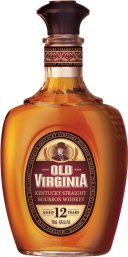Jack Daniel's Tennessee Honey
Hot on the heels of the most exciting release of the year for American Whiskey, Jack Daniel's have released their 1L Jack Daniel's Tennessee Honey! A smooth blend of Jack Daniel's Tennessee Whiskey and honey liqueur to deliver a taste that is authentically 'Jack'. Rich notes of natural honey, sweet molasses and roasted nut glaze with the distinctive nose of classic Jack Daniel's. Best served chilled over ice or mixed with Dry or Cola.
Jack Daniel's Tennessee Fire Cinnamon Liqueur Whiskey
The ultimate combination of red hot cinnamon and the authentic taste of Jack Daniel's Tennessee Whiskey. It has the perfect amount of sweetness, Tennessee Fire also has a unique finish combining a smooth and warm cinnamon with the unmistakable character of classic Jack Daniels.
Old Virginia 12 Year Old Kentucky Straight Bourbon Whiskey
Old Virginia's 12 Year Old showcases the rare quality of authentic Bourbon from Kentucky. Presented in
Southern Comfort Black
Proprietary blend of whiskey sourced from Sazeracs North American whiskey reserves, enhanced with iconic Southern Comfort sweet and spicy essence. This new robust whiskey-forward profile coupled with subtle sweetness, for comfortable enjoyment and easy mixing



